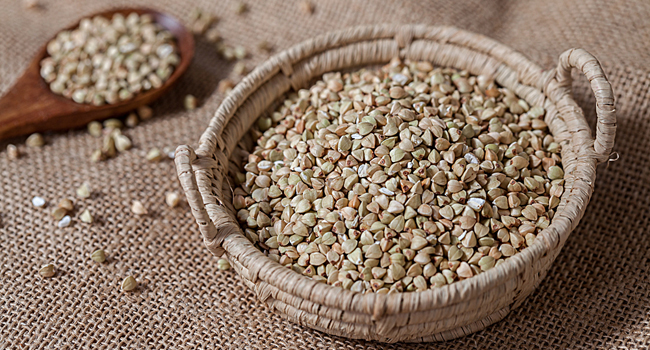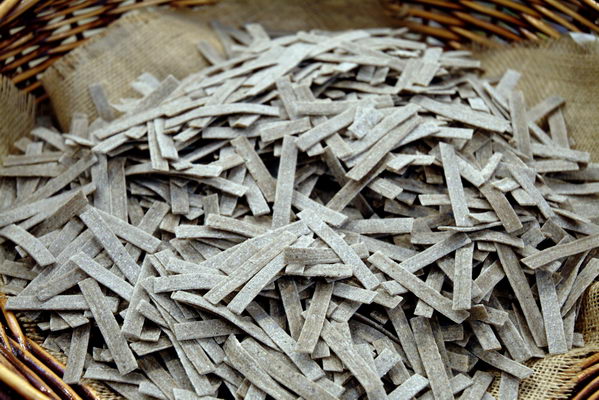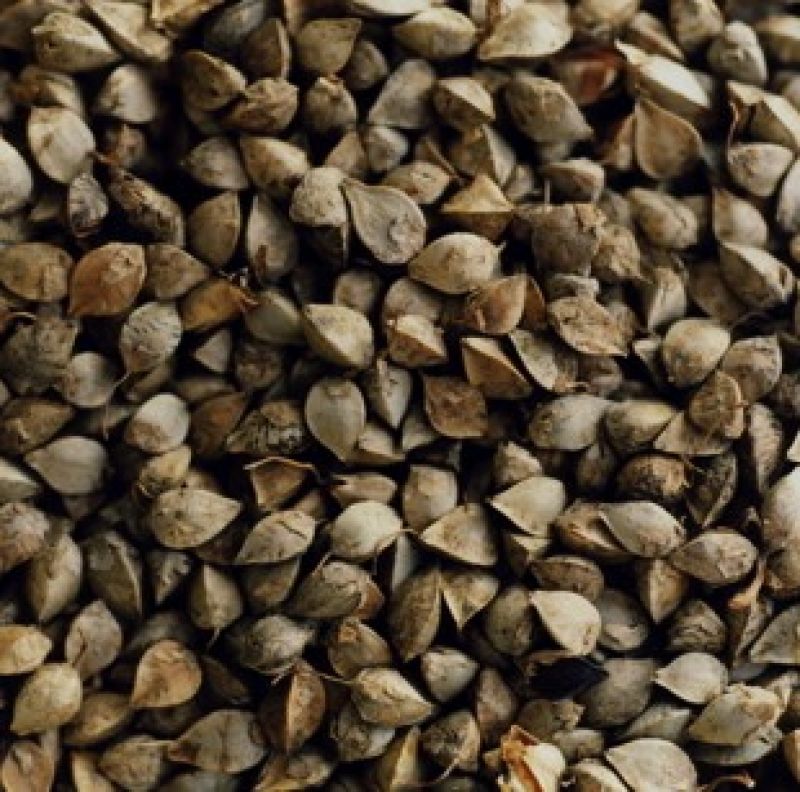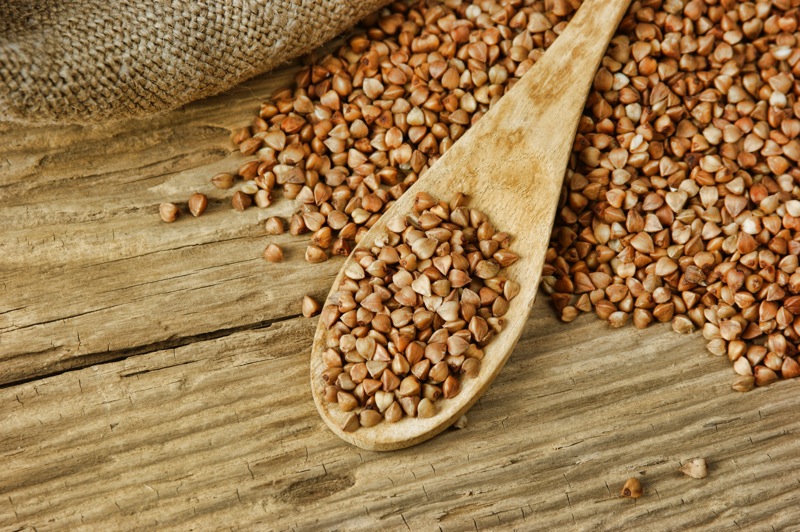
Valtellina Buckwheat
This post is also available in:
 Italiano (Italian)
Italiano (Italian)
Buckwheat (Fagopyrum esculentum), also locally called “Furmentùn”, “farina” or “negra flour”, belongs to the Chenopodiacee family and not to the Gramineous genus as the popular name would suggest. This variety is also gluten-free. It was introduced in Valtellina in 1600, today is one of its most characteristic crops.
Quite rustic, extremely resistant to cold climates and pests, it used to be grown to exploit the land in the summer months, after the winter harvest of rye, potatoes and barley. Its production peaked around 1800.
Among its many outstanding features, Buckwheat grows well on low-yielding soils used for other crops, even on rocky ones. This is also why it proved vital for the local economy and the survival of the resident. After rye, it allowed the second yearly harvest from the same patch of land.
Following the annexation of Valtellina to Lombardy, things changed dramatically. The new contacts with the Po Valley, which had been previously limited, allowed the locals to buy much cheaper grain.
In the 1850s people started thinking about giving up buckwheat cultivation and the situation worsened in 1974 – 1975: back then, the decline of mountain agriculture began and, by the late 90s, only 4-5 families of buckwheat farmers were still in business in Teglio (only one of them went on cultivating rye as well).
Today, few small crops have survived, while most of the products processed in Italy are imported from abroad. Still, thanks to the greater attention to local produce, the shortness of its crop cycle, and the popular request for gluten-free flour, buckwheat has been given a second chance in this very area.
This revival of the autochthonous variety from Teglio actually dates back to 1999 – 2001, when the Municipality established a cultivation prize and the dedicated “Slow Food Presidium” recognition was officially acknowledged. In 2010, the “Association for the Cultivation of Buckwheat of Teglio and Traditional Alpine Cereals” was born, featuring 15 members. In 2012, the Municipality entrusted the association with the historic Menaglio mill, in the San Rocco district, along the Rogna Stream, which has also become a living museum and headquarters of the very association. Among buckwheat farmers, in particular, there are Riccardo Finotti – who managed to recover some native seed from the elders, and Patrizio Mazzucchelli – the owner of “Raetia Alpine Biodiversity and rare seed savers” organization, who is currently growing native buckwheat and rye.
In particular, two autochthonous varieties of buckwheat are grown in Teglio: the “curunin” (or French buckwheat), up to 4.000 ft above sea level, and the “nustran”, much older (also known as “zibaria”, “ziberia” or Tartary buckwheat (Fagopyrum tataricum) as it most likely arrived here from the east where it spontaneously grows in Manchuria and in the area of Lake Baikal (southern Siberia). In that very part of the world, it was originally planted at altitudes between 1.970 and 2.300 ft above sea level. Unfortunately, most of the current cultivations belong to a variety of Polish origin, due to a previously ill-planned, alleged higher yield.
Buckwheat is sown in early July, sprouts in two days, and ripens towards the end of September, in about 90-100 days. After the harvest, it is left to dry outside in small sheaves, and then it undergoes beating. Before storing it in bags, its reddish stalks must be thoroughly removed with a round sieve of a diameter of about 3.2 ft with a wicker bottom.
There are several typical dishes of the traditional Valtellinese cuisine prepared with buckwheat flour: “black” polenta, polenta taragna, pizzoccheri (a historical treat at yearly the festival, seasoned with some cheese, the few vegetables available, and real lard instead of butter as it’s customary today.
Guided tours of the “Museum of Alpine Mountain Cereals, Buckwheat and Rye”( inside the Menaglio Mill) are available on request, and it is also possible to attend the morning grinding procedure, between 9 and 11:45 am.
Reservation and booking can be made to: Teglio INFOPOINT, tel. (+39) 0342 782000.
Where to taste Valtellina Buckwheat:
Osteria del Crotto, Teglio (SO),
tel. +39 348 6701642,
info@osteriadelcrotto.it
This post is also available in:
 Italiano (Italian)
Italiano (Italian)
Contatti
Associazione per la Coltura del Grano Saraceno di Teglio e dei Cereali Alpini Tradizionali, Antico Mulino Menaglio, contrada San Rocco - 23036 Teglio (SO)(SO)
INFOPOINT DI TEGLIO +39 0342 782000





